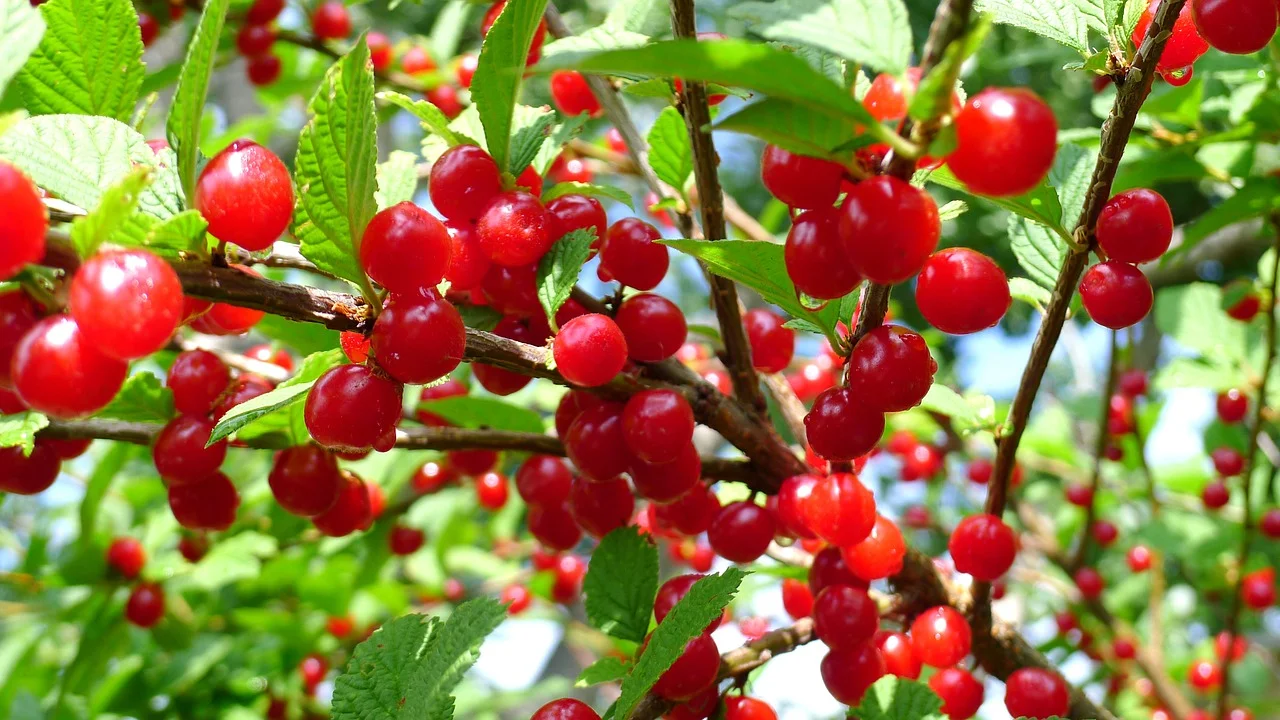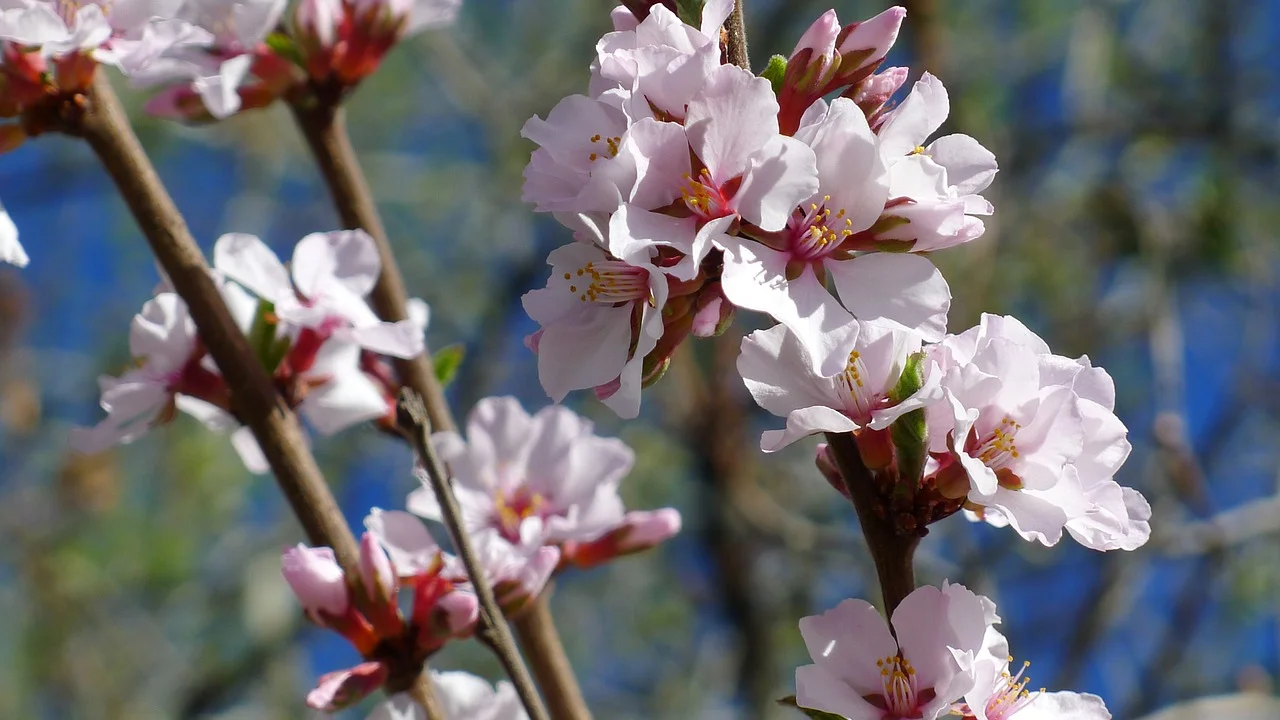Bush Cherries
Nanking Cherries (Prunus tomentosa), Korean Cherries (Prunus japonica), and fall-ripening bush cherries (Prunus japonica x jacquemontii)
Bush Cherries
Bush cherries are a great alternative to cherry trees - they are smaller, easier to grow, and less susceptible to diseases. Bush cherry shrubs produce tart cherries, so they’re often better for making pies than for eating off of the tree, although some people claim to enjoy them raw, and their sweetness can vary by variety. Although they do best in full-sun and well-drained soil, bush cherries are also pretty tolerant to different soil conditions. Besides their fruit, bush cherries have have beautiful foliage and blossoms and they are good wildlife habitat and are attractive to bees and other pollinators. They grow best in zones 2-7.
When they are full grown, bush cherries should be pruned in the late winter when the heavy freezes are over to remove any damaged or diseased limbs and crossing branches. In the summer, after fruiting, they can also be pruned to shape the plant.
The Varieties
There are three main types of bush cherries: Nanking Cherries, Korean Cherries, and fall-bearing cherries. So far, we’ve planted Nanking cherries and Korean cherries in our budding shrub hedge.
Nanking Cherry
Nanking cherries seem to be the most well-known variety of the three. These are a multiple-stemmed bush cherry that grows from 6 to 10 feet tall and 4 to 5 feet wide. This variety flowers in March and produces berries in late May and early June, if you can beat the birds to the fruit. Nanking cherries require cross pollination, so you need at least two different types of Nanking Cherries relatively close to each other. (In the pictures above, we have strains “A” and “B.” Don’t ask me what that means….) Nanking cherries can be pollinated by plums that flower at the same time. Nanking cherries can produce fruit as early as their first year and has a productive life of 50 years or more.
From Wikimedia Commons: https://upload.wikimedia.org/wikipedia/commons/d/dc/Prunus_tomentosa_-_berries.JPG
Korean bush cherry
Korean bush cherries grow to 5-8 feet in height and width and they produce average-sized, bright red cherries in mid summer. The cherries are said to be slightly sweeter than those from the Nanking Cherry, but the bush is also less productive. Korean bush cherries are self fertile, but two plants increase fruiting. (We just have one plant so far!)
Fall-ripening bush cherry (also called “Meader,” “Joy,” or “Joel” bush cherries)
The Fall-ripening bush cherries are most useful for doing what the name says - producing cherries in August and September when most other cherries are done for the year. The other benefits of this later harvest date is that the plant is more resilient to spring frosts and somewhat more resistant to bird damage, as the birds have a wider variety of summer foods to choose from. Fall-ripening bush cherries grow to 4-5’ in height and width and requires cross pollination. This variety starts bearing fruit in 2-3 years and has a productive life of 20 years.
2022 Bush Cherry Update - Spring flowers!
Last year we got about 2 cherries, which is normal for a first/second year plant. This year we have high hopes for more! If nothing else, we had this beautiful display in early spring.
https://www.flickr.com/photos/vintage_illustration/33350011768/in/photostream/
Nanking Cherry History
“Nanking Cherry is native to central Asia; adapted to cold, semi-arid regions; and the most common fruit plant in gardens in the Russian Far East. It was introduced to North America in 1882. Pomologists in that era spoke highly of this plant’s potential. It was featured in the Yearbook of Agriculture 1937 as a plant with unusual opportunities in plant breeding by acclaimed breeder Dr. George Darrow. Like many uncommon fruit, the genetic potential has remained untapped, probably because it did not fit requirements in a globalized marketing system reliant on long supply chains. “Nanking Cherry fruits are poor commercial fruits because they are too soft for shipping and have a short shelf life,” said Lee Reich in Uncommon Fruits for Every Garden. Fortunately there has been some breeding. Russian breeders have made selections and developed hybrids with other Prunus species. The largest commercial plantations are in Russia.
Nanking cherries are enjoyed eaten fresh, and the juice makes a refreshing drink and a beautiful, clear jelly. The fruit can also be used as any other tart cherry, but because of their smaller size (about ½ inch across), pitting is more time consuming.”
- From Carandale Farm’s “Uncommon Fruit” (which is also the source of much of the information from this post!)











